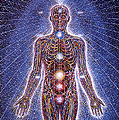Theory one. Memory replacement.
Scientists at MIT reported in the journal Science that they caused mice to remember receiving an electrical shock in one location, when in reality they were zapped in a completely different place. The researchers weren’t able to create entirely new thoughts, but they applied good or bad feelings to memories that already existed.
“It wasn’t so much writing a memory from scratch, it was basically connecting two different types of memories. We took a neutral memory, and we artificially updated that to make it a negative memory,” said Steve Ramirez, one of the M.I.T. neuroscientists on the project.
It may sound insignificant and perhaps not a nice way to treat mice, but it is not a dramatic leap to imagine that one day this research could lead to computer-manipulation of the mind for things like the treatment of post-traumatic stress disorder, Mr. Ramirez said.
“I think this is the real frontier of human communication in the future. We already can get our monkeys, and even humans, to move devices just by thinking,” he said. “Once you can write to the brain, I can imagine the same type of logic working for communication where your thoughts and a message will be communicated to another human being and they will be able to understand it.”
It looks like mending that broken heart, through manipulation of our memories, might be here closer than we think.
he experiment began when mice were placed in a chamber for one day and were given that time to explore their surroundings, creating memories of that environment. On the second day, the mice were put in a completely different chamber, but after being allowed to explore for a limited time, they received a mild shock. During this shock, the researchers activated the brain cells associated with the memories of the previous day’s chamber. On the third day, the mice were returned to the first chamber, but they were terrified. Researchers had successfully implanted a false memory of those mice being shocked in that particular chamber.
The MIT scientists are just getting started, though. They now want to look at how they can further manipulate memories. Graduate student Steve Ramirez said:
“Now that we can reactivate and change the contents of memories in the brain, we can begin asking questions that were once the realm of philosophy. Are there multiple conditions that lead to the formation of false memories? Can false memories for both pleasurable and aversive events be artificially created? What about false memories for more than just contexts — false memories for objects, food or other mice? These are the once seemingly sci-fi questions that can now be experimentally tackled in the lab.”
This applies to art and healing because when you make art, you go into the darkness, find the memory, stimulate those cells, and then make art and replace the memory with the new beautiful one.
